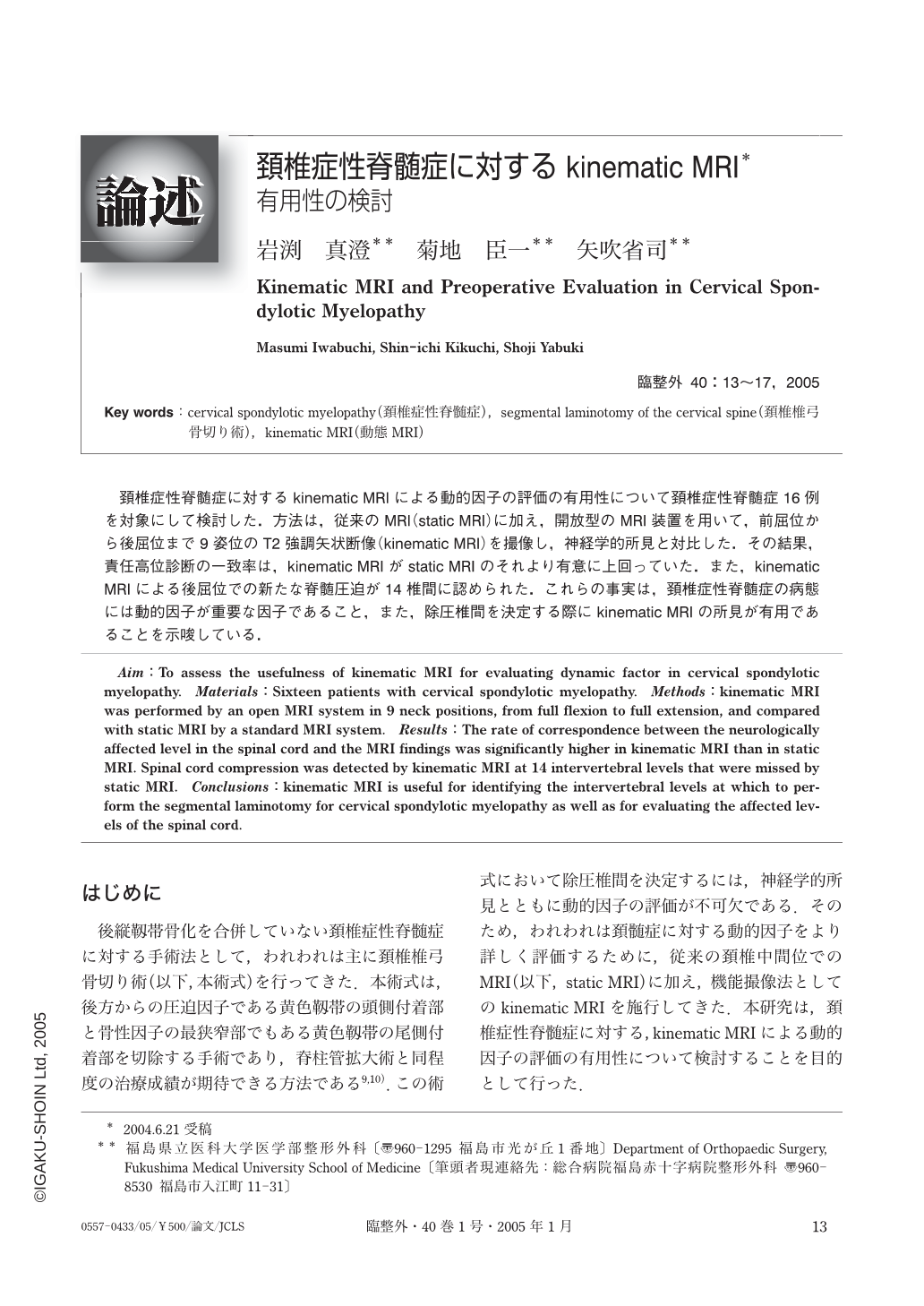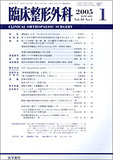Japanese
English
- 有料閲覧
- Abstract 文献概要
- 1ページ目 Look Inside
頚椎症性脊髄症に対するkinematic MRIによる動的因子の評価の有用性について頚椎症性脊髄症16例を対象にして検討した.方法は,従来のMRI(static MRI)に加え,開放型のMRI装置を用いて,前屈位から後屈位まで9姿位のT2強調矢状断像(kinematic MRI)を撮像し,神経学的所見と対比した.その結果,責任高位診断の一致率は,kinematic MRIがstatic MRIのそれより有意に上回っていた.また,kinematic MRIによる後屈位での新たな脊髄圧迫が14椎間に認められた.これらの事実は,頚椎症性脊髄症の病態には動的因子が重要な因子であること,また,除圧椎間を決定する際にkinematic MRIの所見が有用であることを示唆している.
Aim:To assess the usefulness of kinematic MRI for evaluating dynamic factor in cervical spondylotic myelopathy. Materials:Sixteen patients with cervical spondylotic myelopathy. Methods:kinematic MRI was performed by an open MRI system in 9 neck positions, from full flexion to full extension, and compared with static MRI by a standard MRI system. Results:The rate of correspondence between the neurologically affected level in the spinal cord and the MRI findings was significantly higher in kinematic MRI than in static MRI. Spinal cord compression was detected by kinematic MRI at 14 intervertebral levels that were missed by static MRI. Conclusions:kinematic MRI is useful for identifying the intervertebral levels at which to perform the segmental laminotomy for cervical spondylotic myelopathy as well as for evaluating the affected levels of the spinal cord.

Copyright © 2005, Igaku-Shoin Ltd. All rights reserved.


